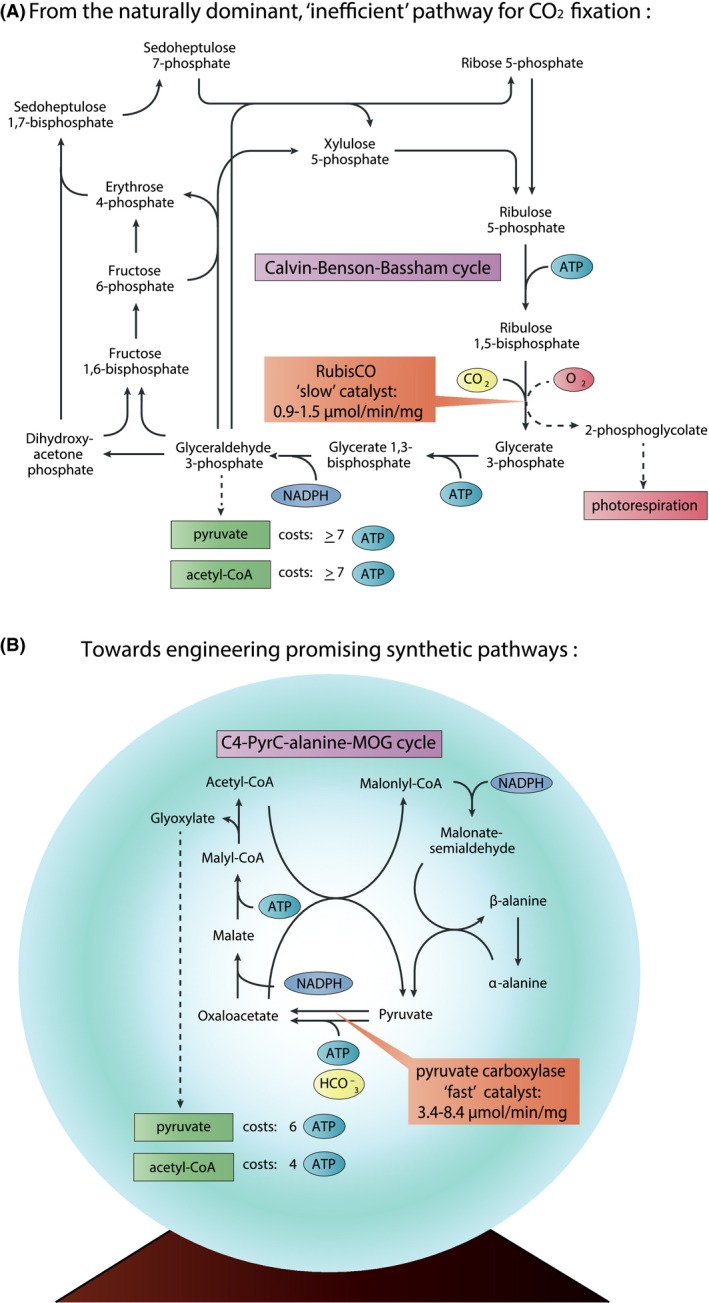Figure 1.

(A) The ‘inefficient’ Calvin–Benson–Bassham cycle with the ‘slow’ carboxylase RubisCO as key enzyme, the cycle has a consumption of seven ATP per pyruvate or acetyl‐CoA produced, which does not include additional costs for photorespiration in aerobic conditions (Bar‐Even et al., 2010). (B) An example of a proposed, promising synthetic MOG‐pathway, based on the ‘faster’ carboxylase pyruvate carboxylase (Bar‐Even et al., 2010), estimates for its ATP consumption are based on assimilation via the bacterial glycerate pathway for pyruvate and the reverse glyoxylate shunt for acetyl‐CoA. Catalytic turnover rates indicated for both carboxylases are based on ambient CO 2 concentrations (Bar‐Even et al., 2010).
